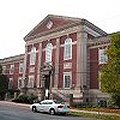- By Marcia E. Lynch
- News
 Print
Print  The County’s Independent Redistricting Commission, charged with recommending a plan for reapportioning County legislative districts based on the 2010 Census, continued its work this week. Members reviewed a number of alternatives based on a Legislature of 13 to 16 members, considered issues raised from past comments received, and looked ahead to the timetable for the Commission’s future work.
The County’s Independent Redistricting Commission, charged with recommending a plan for reapportioning County legislative districts based on the 2010 Census, continued its work this week. Members reviewed a number of alternatives based on a Legislature of 13 to 16 members, considered issues raised from past comments received, and looked ahead to the timetable for the Commission’s future work.Commission members, meeting on Wednesday, agreed that, based on comments received so far, there are key issues that the Commission should consider whenever possible when drawing district boundaries. Those issues include achieving equal population, within the permitted 10% deviation; maintaining communities of interest and neighborhoods; reducing sliver districts into the Town of Ithaca; reflecting municipal boundaries; considering the impact of Legislature size on legislative workload; and reducing potential elections expense.
“These issues are considerations that have been raised during the course of our listening to people, and we’re keeping them in mind,” Commission Chair Hank Dullea noted.
The committee continued to review maps displaying a number of possible approaches to modifying current Legislative districts, including new alternatives for a 13- and 16-member Legislature. County Information Technology Services Director Greg Potter, whose department prepared the maps, pointed out that the 13- and 14-member options permit the City to be totally contained in four districts, and a 16-member district is difficult to apportion, with a lot of sliver districts needed.
While no final decisions have yet been made, members agreed to concentrate efforts on options for a 13- or 14-member Legislature (since those approaches would allow the City to be intact and would keep the Villages of Lansing and Cayuga Heights together); to keep one active option for preserving a 15-member Legislature; and to ask that one or more options for a 17-member Legislature be developed. They took a 16-member configuration off the table at this point.
Regarding the schedule going forward, Chair Dullea hopes the Commission can reduce its active options to about four at its next session November 1, then fine-tune those options at the following meeting November 16. An interim report would be delivered to the Legislature, and the Commission during December would seek to further reduce the number of proposals to one to three, which would then be presented for public comment in January. Dullea said he would anticipate final committee review in February, with presentation of a final report to the Legislature by the March 1 deadline.
v7i42



